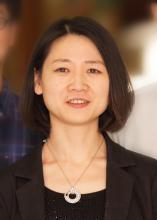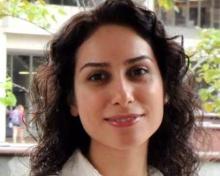Optical Filters and Their Applications (2021)

Mr. Casey White
Senior Engineering Project Manager
Viavi Solutions, Santa Rosa, CA
Thu, 04/15/2021
Abstract – Founded in the 1940s in Santa Rosa, CA, Optical Coating Laboratories (OCLI) has been designing and building optical interference filters for applications from security features in currency notes to satellite optics. OCLI, now known as VIAVI Solutions, continues to service the needs of customers in the Aerospace, Document Security, Telecommunications, and Consumer Electronics industries. In this talk we will review interference filter technology: how they are used to create bandpass, lo and hi-pass, and other filter types for wavelengths ranging from Ultraviolet to Far Infrared, how these filters are created using specialized materials at the nanoscale, and some examples of products created that include optical filters.
Mr. Casey White is a Senior Engineering Project Manager in R&D at VIAVI Solutions Optical Security and Performance Products division in Santa Rosa, CA. He has over 20 years of industry experience at all levels of the organization. Casey has a Bachelor’s of Science in Electrical Engineering from Sonoma State University and Licensed Project Management Professional. Casey has been involved with multiple space missions delivering hardware for the International Space Station, GOES-16, Joint Polar Satellite System, Europa Clipper, and many others.
Using 3D Computer Aided Design to Bring Your Ideas to Life

Mr. Tom Greer
CEO
Gizmo Design, Santa Rosa, CA
Thu, 04/01/2021
Abstract – Developments in Computer Aided Design have led to the rise of increased productivity, Product Design / Engineering, and long-term quality surrounding the field of Product Design and Mechanical Engineering. These rapid visualization tools allow design teams to collaborate with utmost efficiency. Design validation using Simulation to characterize Mechanical Stresses, Flow simulation, and Plastic injection molding are available at a fraction of the cost compared to the first advanced CAD systems some 40 years ago. Coupled with rapid prototyping, CAD tools accelerate the development of Prototypes, putting the end product in users’ hands for both Functional and Environmental testing. This lecture will provide the participant with an overview of the design process using SolidWorks CAD software. While explaining the SolidWorks user interface, we will show the construction of Parts, Assemblies, and Drawings. Thereby offering a recipe as to how parts are made. This will include a “layman’s” overview of Boolean logic and the Cartesian Coordinate system as it relates to the creation and modification of 3D Geometric Parts, which is the foundation of most CAD systems. By the end of this lecture you will understand how using 3D CAD can bring your ideas to life!
Mr. Tom Greer’s interest in Design and Mechanical Engineering started as a youth; taking things apart and trying to put them back together without having any spare parts left over. He started drawing, building models and prototypes at an early age, and has continued to do so as owner and founder of Gizmo Design, Inc. over the past 21 years. Tom studied Product Design at Montana State University, with a focus on Biomechanics and Human Factors Engineering. Post-graduate studies include Advanced Composites Engineering and Testing at Mississippi State University’s Raspet Flight Research Laboratory, and Structures and Composites at Stanford University. He worked with Burt Rutan on the Design and construction of the fireproof cabin for the Voyager aircraft, spent years in the Aerospace industry, followed by years as a Designer and Brand Manager in the Bicycle industry, and Hi-tech/ Silicon Valley. Tom worked as the CAD designer with the Television series “Prototype This!”. He holds numerous certifications and Patents, and has taught hundreds of students how to use 3D CAD to bring their ideas to life! In his spare time, Tom enjoys being with his family and friends, music, exploring the outdoors with a fly rod, bicycle, Skis, or backpack, and is an active board member of Trout Unlimited, and of course, still takes apart and fixes things.
THz Interconnect, the Last Centimeter Communication

Dr. Jane Gu
Professor
ECE Department, UC Davis, Davis, CA
Thu, 03/18/2021
Abstract – "Interconnect Gap" has been a long-standing big challenge caused by the gap between the ever-increasing data rate demand of inter-/intra- chip communications and the insufficient capabilities. Existing electrical interconnect (EI) and optical interconnect (OI) face grand barriers to completely address the interconnect issues individually. THz Interconnect (TI), utilizing the frequency spectrum sandwiched between microwave and optical frequencies, holds the high potentials to complement EI and OI by leveraging the advantages of both electronics and optics. In this talk, I will present our research activities in the high potential TI field, including THz silicon waveguide channel development, TI system demonstration, dispersion constrained link bandwidth and mitigation schemes such as FDM and orthomode channelization.
Dr. Qun Jane Gu has received the Ph.D. from University of California, Los Angeles in 2007. Since August 2012, she has been with University of California, Davis, where she is currently a professor. Dr. Jane Gu's group is passionate in high performance RF, mm-wave and THz integrated circuits and systems and its broad applications. The work from her group has won several best paper awards from international conferences. She has received NSF CAREER award, 2015 COE Outstanding Junior Faculty Award, 2017 and 2018 Qualcomm Faculty Award, and 2019 Chancellor Fellow.
Reflecting What AI Perceives from Human Interaction

Dr. Nina Marhamati
CS Department, Sonoma State University, Rohnert Park, CA
Thu, 03/04/2021
Abstract – Inspired by interactive art pieces and all the excitement about AI surrounding us, we wonder what machines and AI can reflect about humans and the interactions with humans. In this talk, you will hear about an AI system that we are creating to reflect on user interaction and to demonstrate how the way the user approaches the system (machine) is perceived by AI. Different machine learning and state of the art AI methods are used to detect the user's emotional state while interacting with the system. The sensory inputs are processed, and will be fused when possible, to extract information from the interaction and improve the results. The perceived interaction results are demonstrated via animations or other visuals in two or three-dimensional settings. The final product has the potential to be integrated into virtual reality or augmented reality applications. This is an interdisciplinary project with collaborators from different backgrounds in CS, EE, and art.
Dr. Nina Marhamati is an Assistant Professor of Computer Science at Sonoma State University and, on the side, provides machine learning consulting services to the industry. She was an Artificial Intelligence Fellow at Insight Data Science and received her PhD in Computer Science from Southern Illinois University, where she was a DRA Fellow and the Outstanding Graduate Assistant in 2016. She was the recipient of the Best Dissertation Award from North American Fuzzy Information Processing Society in 2017. She is passionate for applications of artificial intelligence and machine learning that make day-to-day life easier and more fulfilling. She enjoys working on interdisciplinary projects and her areas of interest include natural language processing, machine learning & data analysis, Bayesian estimation theory, computing with words, and fuzzy logic.
FPGA Acceleration on Artificial Intelligence

Dr. Xiaokun Yang
University of Houston-Clear Lake, Houston, TX
Thu, 02/18/2021
Abstract – Hardware acceleration on Artificial Intelligence (AI) has become an indispensable technique for a wide range of real-time applications such as video classification, speech recognition, and autonomous robot. Specifically in the era of edge computing, to limit the complexity of AI algorithms in the power-constrained and latency-critical scenarios is a big challenge. Therefore, this presentation focuses on mapping neural networks onto field-programmable gate array (FPGA) with the benefits of high parallelism and programmability. Generally, two research subjects are discussed: the design and evaluation to FPGA acceleration and system-on-chip (SoC) architecture to FPGA. First, case studies to the design on FPGA accelerator are presented, including handwritten digit recognition and real-time music transcription. Second, a low-cost and energy-efficient SoC architecture is discussed to the applications of edge devices. By integrating DMA, AES core, bus wrappers, and open verification components (OVCs), a UVM-based environment is finally established to verify the functionality of the SoC.
Dr. Xiaokun Yang received his Ph.D. from the Department of Electrical and Computer Engineering (ECE), Florida International University (FIU), USA in Spring 2016. He is currently an Assistant Professor at the College of Science and Engineering, University of Houston-Clear Lake. From 2007 to 2012, he has also worked as a Senior ASIC Design and Verification Engineer at Advanced Micro Devices (AMD) and China Electronic Corporation (CEC). His research interests include Hardware Acceleration on AI/ML, ASIC/FPGA Design and Verification on Neural Networks, and Energy-Efficiency System-on-Chip (SoC) Architecture. As the first author or corresponding author, Dr. Yang has published more than 50 papers including 3 patents, more than 15 peer-review journals, and more than 30 prestigious international conferences. He has served on several editorial boards and journal reviewers including IEEE Trans. on Computer, IEEE Trans. on VLSI, and IEEE Trans. on Education, and numerous conference committees including ISVLSI and ISQED.